By Nikki Savvides, Epicure & Culture Contributor
Tourism often involves unsustainable activities that damage environmentally sensitive areas. Environmentally conscious tourists can make informed decisions and avoid participating in activities that contribute to the destruction of natural ecosystems.
Here are five environmentally sensitive areas tourists shouldn’t visit, as well as recommendations for where to go instead!
1. Portofino, Italy
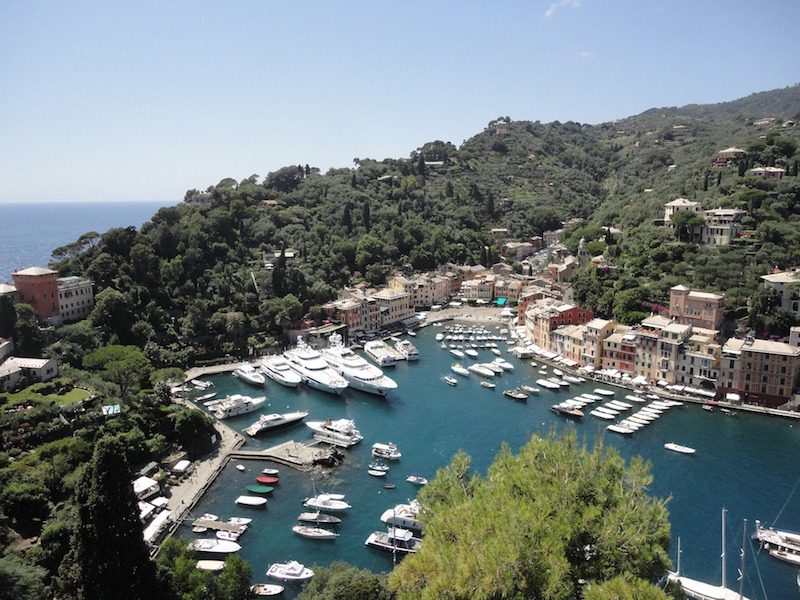
The Destination
Portofino is a small fishing village set on a peninsula in the Gulf of Tigullio, on the east coast of northern Italy. It is a popular upmarket tourist resort, known as a retreat for the rich and famous, but also accessible to travelers on a lower budget.
Colorful buildings span its crescent harbor and are a major attraction for the thousands of tourists who flock to Portofino over summer. Portofino is known for its cafes, restaurants, galleries and boutiques, set amongst quaint narrow streets. Visitors enjoy the many pristine beaches that span the coastline, and open water activities such as yachting, diving and snorkeling.
The Problem
Sounds great, right? Unfortunately, the tourist influx in summer places significant stress on the ecosystem of the area.
The bottlenose dolphins of Portofino are in trouble. Here's how you can help #thisissustainable Click To TweetThe popularity of open water activities has had a significant impact on the Portofino marine protected area, which was established in 1999 by the local government, universities and ecological foundations to protect the biodiversity of the Gulf of Tigullio and the surrounding Ligurian Sea. This especially impacts the bottlenose dolphin population that is endemic to the area.
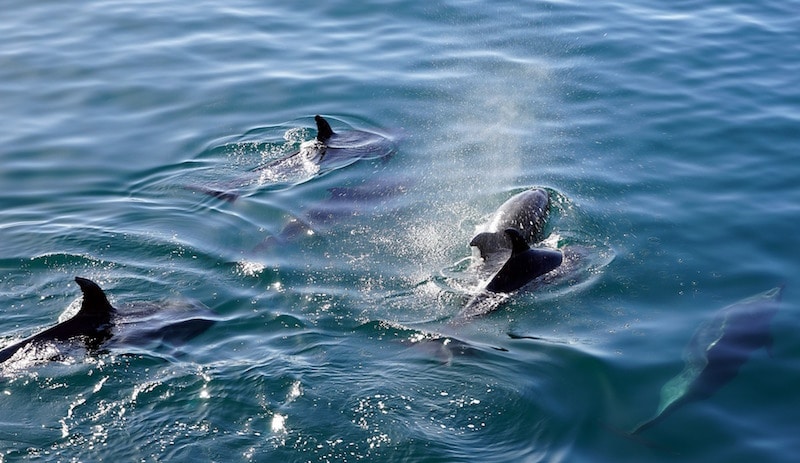
The name “Portofino” is derived from the Latin Portus Delphini, which literally translates to “Dolphin Harbor.” The Ancient Romans named the area after the numerous dolphins of the Ligurian Sea.
As the area has developed, Portofino’s eponymous dolphins have slowly reduced in number due to the degradation and loss of their coastal habitat. Urbanization, construction, boat traffic, shipping, pollution and overfishing have all contributed to the decline of the dolphin population.
Additionally, tourism has and still plays a substantial role in making this one of the world’s top environmentally sensitive areas, with intensive boat traffic during the summer season significantly increasing underwater noise pollution. This threatens the dolphins, who communicate and orient using underwater sonar-waves, and whose pods and social interactions are upset by the noise. Further, the interactions of tourists with dolphins is often unregulated and means that dolphin social structures are further impacted.
The Solution
The best solution to protect Portofino’s dolphins and their fragile ecosystem is to decrease the extent and range of open water activities and to either more tightly regulate tourism or vastly reduce the numbers of tourists that visit the town, particularly in summer.

For a more sustainable alternative to holidaying in Portofino, head to Varese Ligure, a village around 30 miles east of Genoa. Here, a small yet thriving tourism industry has been developed with sustainability in mind.
Like Portofino, Varese Ligure boasts brightly colored traditional buildings, narrow winding streets, cafes, restaurants and markets; however, rather than being focused on activities that damage the environment, tourist infrastructure is based around organic food production, sustainable resource use and a strong focus on clean energy and recycling.
2. Cozumel, Mexico

The Destination
If you care about sustainable travel and eco-tourism in Mexico, this one is for you.
Cozumel is Mexico’s largest island, thirty miles long and eight miles wide. It lies within the Riviera Maya — part of the Caribbean Mexican Zone — and is surrounded by expansive coral reefs that are rich in biodiversity.
The island is devoted to tourism, all of which revolves around its beaches and reefs. Diving, snorkeling, sport fishing and sailing are all popular on Cozumel, and millions of tourists visit the island every year to enjoy these pursuits. Cozumel is also a stop over for cruise ships traversing the Caribbean.
The Problem
Around five million tourists visit Cozumel every year, and rampant and often unregulated tourism development has caused significant damage to Cozumel’s reefs and hinterland. Today, it’s one of the world’s top environmentally sensitive areas.
Tourism infrastructure has been built directly within the coastal zone, often with little regard for the environment. For instance, during the 1990s a new pier was built to accommodate the increasing number of cruise ships visiting Cozumel, endangering the sensitive “Arrecife Paraiso” (Paradise Reef) and the habitat of its numerous marine species — including sea turtles, electric rays, angel fish, gropers, octopi and hermit crabs. Poor planning and management meant the pier was constructed within a protected marine area. Cruise ships often drop anchor onto the reefs themselves, damaging fragile coral.
5 Environmentally Sensitive Areas Tourists Shouldn’t Visit Click To TweetFurther, the cruise ships that arrive produce large volumes of waste including sewage, greywater, solid waste, oils and other pollutants, as well as creating noise pollution.
Tourist development on land has also caused significant declines in endemic mammal populations due to habitat loss, including pygmy racoons, dwarf coati and pygmy collared peccary. Estimates show that Cozumel lost 70% of its biodiversity in the past decade due to tourism.

Tourism development — including the construction of hotels and restaurants — has involved the filling of wetland areas, the alteration of sand dunes, the removal of endemic flora and the introduction of exotic plants, and has been responsible for the discharge of waste water directly into the sea.
The increasing popularity of diving, snorkeling, sport fishing and sailing has also occurred at significant cost to the coastal ecology, with careless divers and snorkelers damaging Cozumel’s fragile reef ecosystems, boats disposing of engine oil and fuel into the sea, and sport fishing reducing fish populations.
While new measures and initiatives aim to protect the island, raising awareness among tourists and tourism operators and opening new reserves to promote the environmental protection of ecosystems such as the wetlands, it will take many years for Cozumel to see a turnaround. The introduction of sustainable practices such as ecotourism will help, but may be too little, too late.
The Solution
The clearest solution is to reduce tourism to the island and to work on repairing damaged areas, while developing genuinely sustainable tourism practices that reduce the number of tourists and their impact.
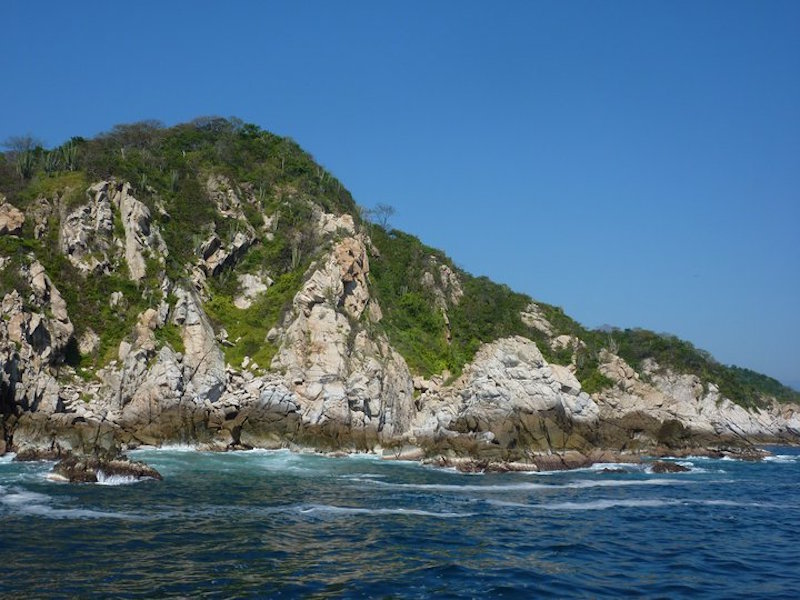
There is an alternative to contributing to Cozumel’s woes – instead of visiting the island, head to Huatulco, a small beach resort on the west coast of Mexico in Oaxaca state.
Strict rules and regulations regarding tourism development and activities in Huatulco protect the environment and unique local ecology, which includes animal species such as armadillos, jaguars, deer, sea turtles and iguanas.
Tourists can stay by the sea and enjoy fresh seafood and clear turquoise vistas. Huatulco has achieved 100% clean electricity production through the use of wind farms, and aims to become entirely carbon neutral. The town produces very little waste and continues to manage tourism in an environmental sustainable way.
3. Ngorongoro Crater, Tanzania

The Destination
Tanzania’s Ngorongoro Crater is the world’s largest intact volcanic caldera. It borders the Serengeti from the north and west, and was formed when a large volcano erupted and collapsed in on itself two to three million years ago.
The crater measures 10 to 12 miles in diameter, with walls that are approximately 2000 feet high. Inside you’ll find one of the densest populations of lions in the world, as well as numerous other mammals including rhinos, zebras, hippos, buffalo and wildebeest, which depend on its 200 square miles of lush, flat grasslands for survival. Most of the animals do not leave the caldera, which acts as a nature enclosure. The caldera is also home to numerous bird species, including white pelicans and flamingos.
The Problem
Ngorongoro Crater was listed by UNESCO as a World Heritage site in 1979, yet has suffered increasing ecological deterioration over the past few decades that has endangered its status and turned it into one of the leading environmentally sensitive areas.
Approximately 500,000 tourists visit Ngorongoro Crater every year to observe its unique biodiversity, with up to 400 safari vehicles making their way into the crater every day in peak season, from July to March. These safari tours are causing untold damage to the crater’s unique ecology.
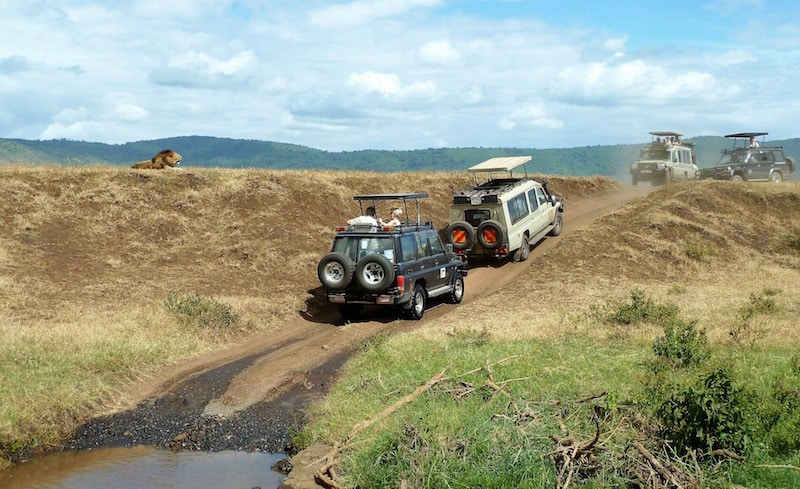
The numerous vehicles that enter the crater every day scare wildlife, cause erosion, damage flora and emit pollution. Animals disturbed by the trucks may experience changes in their feeding, breeding and mating behaviors.
Part of the problem is that the demand for tours is so high that some tour guides and companies think about short term benefits over sustainability; that is, they are concerned with the immediate money to be made from tourism rather than sustainable tourism, even though the latter would mean that their occupation remains viable in the future by protecting the crater.
The Solution
The Ngorongoro Conservation Area Authority (NCAA) has focused on “high value” tourism as a means to limit the number of tourists who visit the region, and also aims to diversify tourism by encouraging people to visit other nearby areas that are under less strain.
Lodges built around the caldera are increasingly encouraging environmentally sound practices.
We've got some exciting alternatives to these 5 environmentally sensitive areas #thisissustainable Click To TweetMoreover, the NCAA has considered lower impact activities such as hot air ballooning that would allow tourists to view the animals in a less disruptive way. The NCAA ultimately aims “to maintain the peaceful co-existence of human and wildlife”.
While these moves are positive, considering the immense pressure current forms of tourism place on the region, the best solution is for tourist numbers to decrease. This means that tourists need to make purposive decisions not to visit the crater.

For an alternative to visiting Ngorongoro Crater and a lower impact way to see African wildlife, you could head to Zululand, South Africa and work with Wildlife ACT to track wild dogs and leopards.
You’ll get close to wildlife while learning about the species and giving back to the area by contributing to conservation efforts. Paying to work is a fantastic way of providing financial support to conservation efforts while also having an exciting experience very different to the standard safari tour.
4. Maasai Mara, Kenya
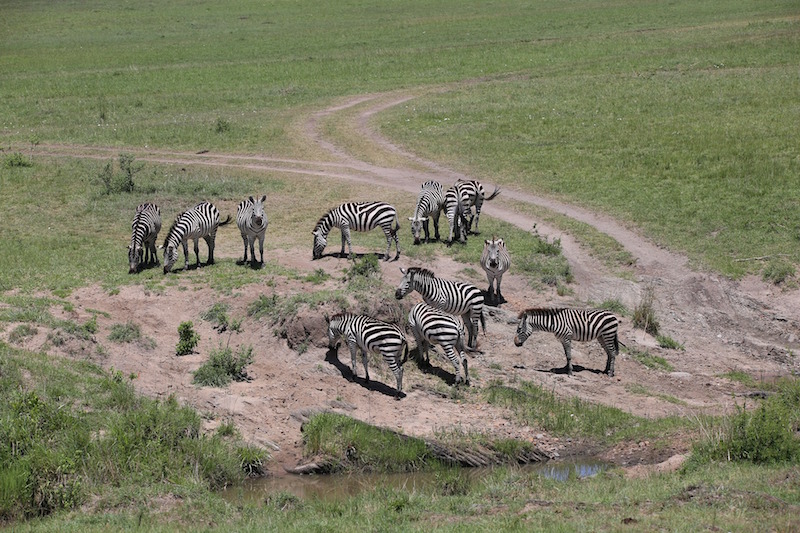
The Destination
The Maasai Mara game reserve sits within the Mara National Reserve, 371,000 acres of land owned by the government that comprises the northern quarter of the Serengeti in Narok County, Kenya.
It is named after the Maasai people who are indigenous to the region. The word “Mara” means “spotted”, descriptive of the appearance of the reserve — dotted with trees, shrubs and savanna — from afar.
Most know the Massai Mara as being the site of annual wildebeest, zebra and gazelle migrations, where more than a million of these animals move en masse from Tanzania to Kenya between July and October. Additionally, the reserve is home to thousands of crocodiles, lions, hyenas, leopards, cheetahs, elephants, buffalo and black rhino.
The Problem
Around 250,000 tourists visit the Maasai Mara every year, and participate in safaris by truck or hot air balloon. Both affect the landscape and wildlife of the region.
Firstly — as is also the case of the Ngorongoro Crater — the trucks cause environmental degradation. This includes erosion, damage to vegetation and pollution. They also frighten animals and disturb their natural behaviors.
Often, trucks go off-road to get closer to the animals, damaging the savanna and disrupting herds. Hot balloons regularly fly too low in order to provide tourists with a better view of the animals, which affects animals like rhinos who are sensitive to noise. Big cats are also disturbed when trucks and hot air balloons enter their territory and may mate less as a result.

Lodges have been built within and around the region — many in “safe haven” areas, which animals rely on to survive drought and human impacts. Prey species also rely on these spaces for protection against predators.
With the lodges have come miles of electric fencing, constructed to minimize human-animal conflict. These damage animal habitats by invading on the natural spaces and territories of many species. These also limit animals’ access to natural water sources, can entangle or trap animals and alter breeding behaviours.
The indigenous Maasai people have also been negatively affected by tourism and by changes in Kenya’s political systems, which in turn has affected their use of the land and impoverished them both culturally and economically.
As the space around them has changed, their more sustainable communal farming practices have been altered. As a result, many raise cattle, grow wheat or farm charcoal, causing serious environmental degradation including algal blooms in rivers and the drying up of natural water sources. Cattle overgrazing has also rendered areas of the Maasai Mara infertile, and big cats have been poisoned by farmers in an effort to protect their cattle.
There are continual tensions between the Maasai people and conservationists. However, while the farming practices of the Maasai Mara have been criticized, they are the natural result of a changing landscape that affects both animals and local people.
Over the past few decades, wildlife populations have decreased by 70%, while illegal cow grazing has increased by 1100%! Such changes have also affected the annual migrations, with the number of wildebeest migrating from Kenya’s Loita Plains decreasing from 300,000 to 30,000 over the past three decades.
Here's how tourism negatively affects the #MaasaiMara (and how you can help) #thisissustainable Click To TweetThe situation in the reserve is complicated by the fact that Kenya is facing economic issues caused in part by a 25% reduction in the number of tourists visiting the country. This is mainly due to terrorist attacks in coastal towns in 2014.
This may have had benefits for the ecology of the Maasai Mara, which receives less visitors; but it also means that locals who benefit from tourism are struggling financially, which turns them further towards unsustainable farming practices as a means to survive.
The Solution
Conservancies of around 200,000 acres have been set up next to the reserve with the aim of rehabilitating overgrazed land and encouraging sustainable tourism, and are generally community-run. These have made some very positive contributions to conservation in the area. However, the region also needs to host fewer tourists if the Maasai Mara is to be protected.
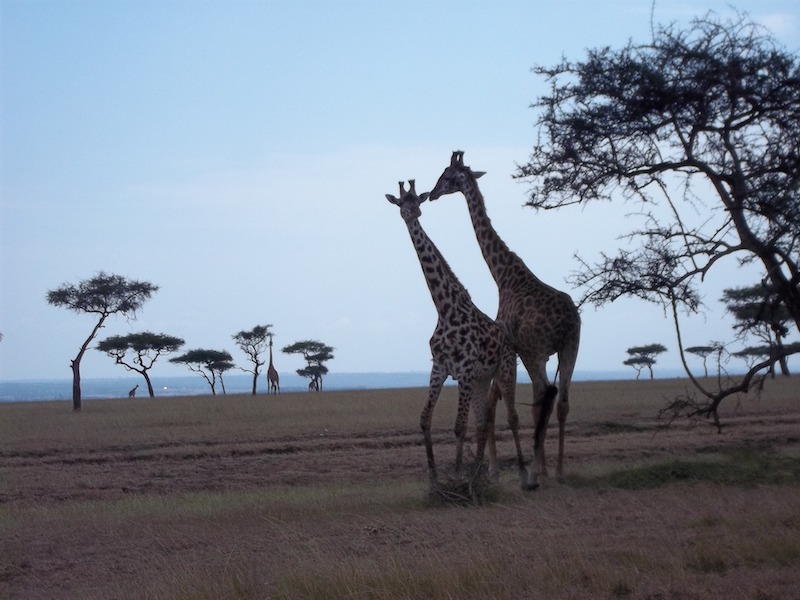
Instead of going on safari in the Maasai Mara, consider spending your time working to protect the area in one of the new conservancies. You’ll provide financial support to the local people, participate in conservation efforts and promote sustainable tourism; all while having the chance to view wildlife and get to know the stunning landscape of the region.
You can find out more about working in one of the conservancies through GoEco.
5. Mount Everest, Nepal/Tibet
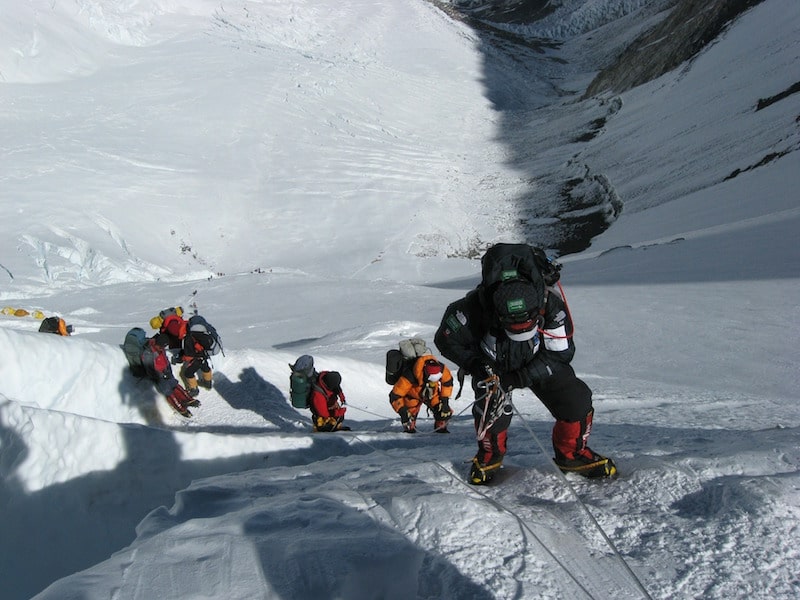
The Destination
If you’ve been researching places to visit in Nepal, you’ve likely heard of Mount Everest.
Mount Everest represents the final frontier for mountain climbers and trekkers at different levels of experience, each striving to achieve great things. This might mean trekking to base camp at 17,600 feet (5,380 meters), or conquering the mountain and its summit at an altitude of 29,029 feet (8,848 meters).
The highest mountain in the world, Mount Everest lies on the border of Tibet and Nepal in the Himalayas, and is known as Sagarnatha in Sanskrit and Chomolungma in Tibetan.
To indigenous hill people — including the Sherpas, an ethnic group whose traditional home is the Himalayan region — Mount Everest is a sacred site.
These semi-nomadic herders traditionally did not climb Everest; instead revering the mountain from a distance, placing prayer flags and building shrines and stupas at its base.
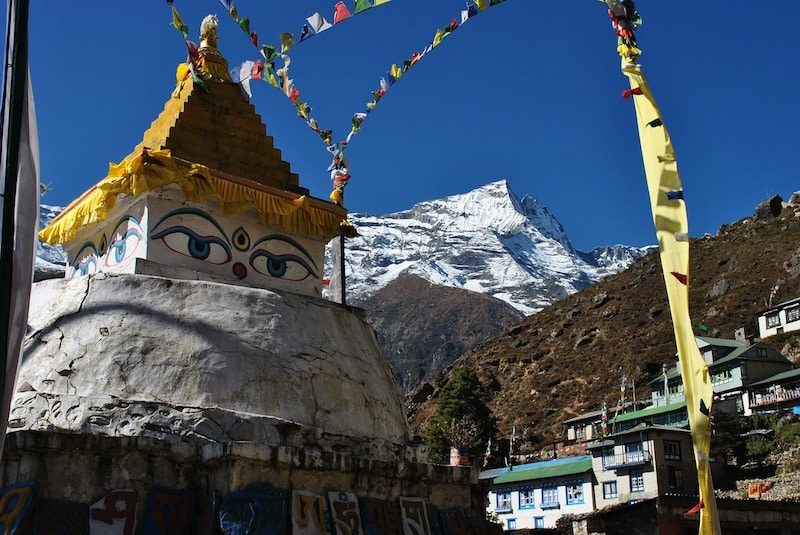
The Problem
Approximately 1,000 climbers and 35,000 trekkers visit Everest every year. In comparison to the climb to its summit, the trek to base camp is relatively easy for fit hikers; the climb, in comparison, bests many people. Of the climbers, only around five hundred are successful at reaching the mountain’s summit each year.
Sherpas and other hill people assist both trekkers and climbers; this has been the case since British expeditions began on Everest in 1921, making portering work available to the indigenous groups who are adapted to the high altitude and can therefore carry heavy supplies. Climbing and trekking thereby changed the traditional relationship the hill people had with the mountain, the revered and sacred site becoming a tourist destination.
Around 4,000 people have reached Everest’s summit since Sir Edmund Hillary and Sherpa Tenzing Norgay’s famed ascent in 1953.
Since expeditions began, around 200 have died on the mountain, some after reaching the summit, others before they made it. Most of the bodies of those climbers have been left on the mountain due to the logistics of removing them from high altitude areas.
Altitude and altitude sickness are the greatest challenges of climbing and trekking Everest, particularly for climbers who ascend beyond base camp. Altitude sickness can cause high-altitude pulmonary edema and hypoxia — both of which can result in death — and are often the reason people perish on Everest.
The altitude and freezing temperatures also expose climbers to frostbite and hypothermia if they choose an inopportune time or location to rest, such as in what is known as the Death Zone, at 26,000 feet (8,000m).
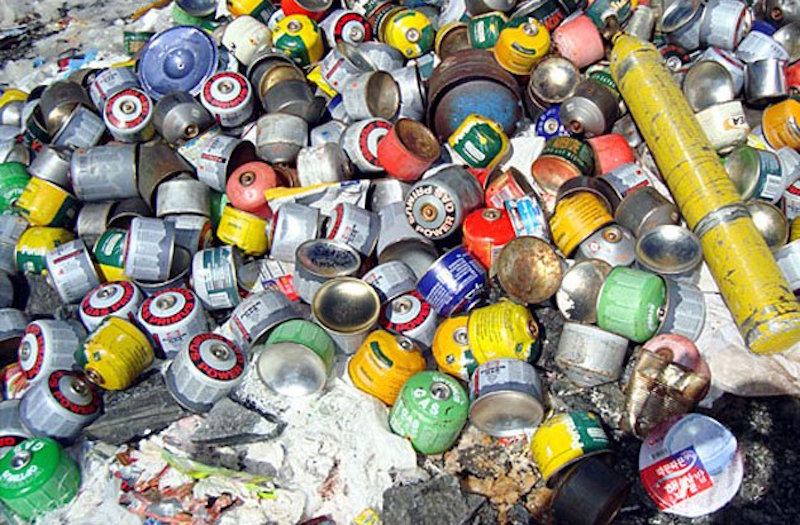
In a bid to reduce the chances of developing altitude sickness, climbers often abandon spent oxygen cylinders, torn tents, crampons, ropes and empty cans of food on their way up or down the mountain. Human excrement is also an issue and causes gastro-intestinal problems for climbers when it contaminates natural water sources. This all occurs because many climbers — determined to reach the summit at all costs — will discard waste in this endeavor, their own achievements taking precedence over maintaining the pristine aesthetic of the Himalayas.
The trash and human waste have caused numerous environmental issues on Everest, polluting the alpine environment. This includes its glaciers and lower altitude forests of birch, pine and rhododendron, and the habitats of snow leopards, lesser pandas, Tibetan bears and numerous bird species.
In the past few years, the Nepalese government has tried to impose new policies to restrict number of climbers and their impact on Mount Everest. Climbers who do not bring at least 18 lbs (8 kg) of rubbish back down with them are fined $4000 (the price of their deposit), but critics of this strategy say that this is difficult to enforce, and that it only goes partway to solve the problem.
Periodic clean-ups also do little to fix the problem, especially with increasing numbers of climbers scaling Everest every year.
It is also in the interests of the Nepalese government to encourage people to visit and climb Mount Everest due to associated economic benefits. The livelihood of the Sherpas and other guides depends on tourism, and climbing and trekking bring in approximately $3.3 million a year for the Nepalese government. These activities are therefore lucrative, and encouraged.
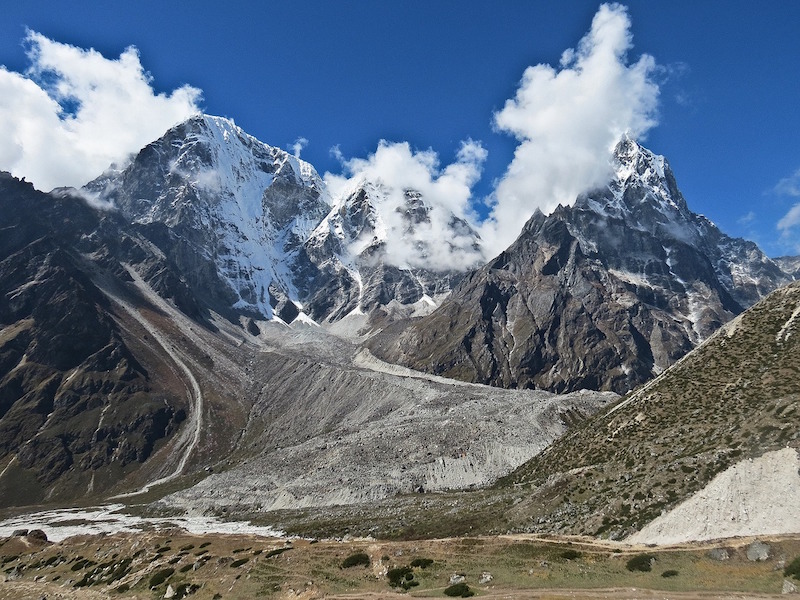
And let’s be honest: it’s difficult to deter tourists from visiting. Recent deadly avalanches — including those in 2014 and 2015, which killed 16 and 22 people respectively — as well as the fact that approximately one in 60 climbers die on the mountain, have not stopped climbers. Everest still calls to people in search of the ultimate extreme adventure.
The Solution
Undoubtedly, the best way to be a responsible tourist is to refrain from visiting or climbing Everest, one of the most famous environmentally sensitive areas.
However, if you are inextricably drawn to the mystique and challenge of the mountain, you could join Eco Everest Expeditions, a climbing group run by the International Centre for Integrated Mountain Development and the United Nations Environment Programme. This group supports the work of Dawa Stevan Sherpa, a Nepalese mountaineer who led the first expedition in 2008.
Want to summit #Everest? Here's how to do it responsibly #thisissustainable Click To TweetEco Everest Expeditions promote and practice sustainable mountaineering. Climbers in this group summit Everest in an ecologically sustainable manner, using alternative energy solutions such as Parabolic Solar Cookers, Steripens for water purification, Clean Mountain cans and Restop bags.
Further, Eco Everest Expeditioners not only bring their own waste and trash down the mountain, they spend their descent collecting the trash and waste left by other climbers, bringing it down the mountain to be disposed of properly. Since 2012 they have brought down 29,800 lbs (13,500 kg) of debris and 1,015 lbs (460 kg) of human waste, and the remains of five climbers who died on the mountain. You can find out more about Eco Everest Expeditions through Asian Trekking.
Do you have a tip to add on visiting environmentally sensitive areas? Please share in the comments below!
Nikki Savvides
Latest posts by Nikki Savvides (see all)
- 5 Environmentally Sensitive Areas Tourists Shouldn’t Visit - Mar 20, 2018
- How A Jewelry-Making Project Is Empowering Displaced Women In Istanbul - Jan 8, 2018
- 6 Pioneering Volunteer Projects Helping Street Animals In India - Aug 22, 2017
- How Tourism Is Saving Oaxaca’s Sea Turtles - Aug 4, 2016

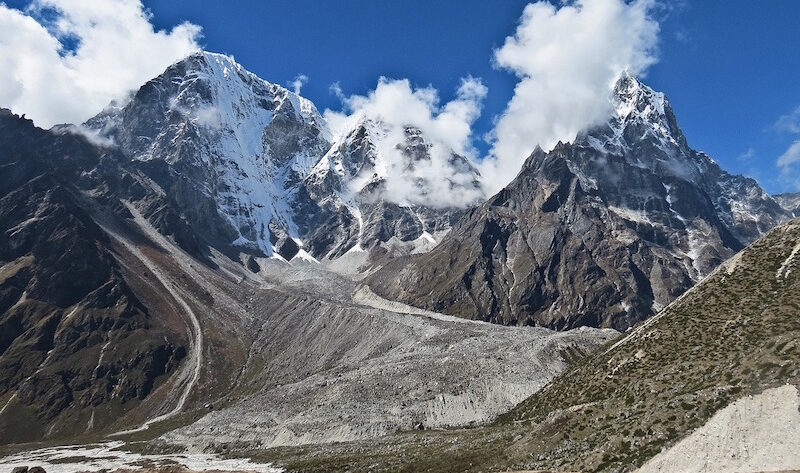






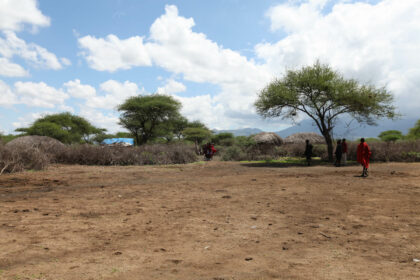

Thanks for this great article and for creating this awareness. Indeed drastic measures have to be taken in order to preserve the ecological wonders especially in Africa.
we appreciate all the information to the bits, it really helpful, enables travelers make the right decision as well have knowledge on where exactly to go and what level of caution they should take.
Awesome piece of information , give an insight about literally the worlds top travel destination
Thanks for this grateful information, it is more helpful for travelers to take the right decision to travel where exactly to go and what they need, especially for Nepal the highest mountain Everest in the world.
It’s a really useful and helpful piece of information for new travelers. Thank you for sharing this article.
this blog is really informative plus helpful for beginner travelers.
Excellent article,
Travelers should have to know the best tips on selecting sustainable tourism in the world.
Cheers!
very genuine article, adventure lovers have to have the best tips on selecting adventure and sustainable tourism. thanks.
“Wow, what an incredibly insightful and informative blog post! Your writing style is engaging and easy to follow, and your expertise on the topic is truly impressive. I especially appreciated the practical tips and real-life examples you shared, which made the information so much more relatable and applicable to my own life. Thank you for sharing your knowledge and experiences with us – I can’t wait to read more of your work!”
great article.. thanks for the information.. mount Everest indeed needs serious attention.. the beautiful mountain in Nepal might lose its beauty if not taken care and used as a dumping site…
Thank you for putting the truth out there for any prospective visitor such that they are able to make their own informed decision while visiting those destinations. A case in point, at Ngorongo, they also have a $290 per day rate for the car to access the conservancy but still vehicles storm the crater.